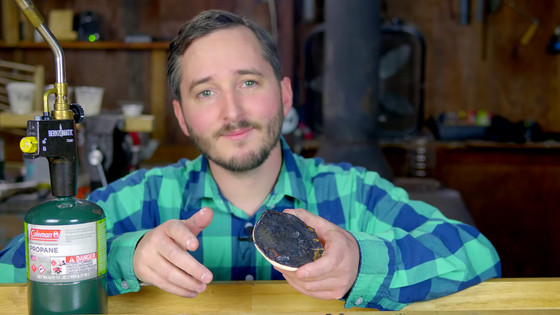Experimental movie that new material of phantom that can withstand ultra-high temperature of 10,000 degrees is at home and easily reproduced

The material invented by British amateur chemist " Starlite " was lightweight, robust, easy to process, and was expected as a dream insulation material that can withstand ultra-high temperatures of 10,000 degrees. However, despite collecting attention from NASA and many technology companies, Starlite has now become a phantasmal super material, as inventors have passed away without clarifying their manufacturing methods. A movie that demonstrates and reproduces such Starlite from something like that in the kitchen is released.
This YouTuber Creates the Almost Indestructible Supermaterial, Starlite in his Kitchen
https://interestingengineering.com/video/this-youtuber-creates-the-almost-indestructible-supermaterial-starlite-in-his-kitchen
A legendary movie that shows Starlite's superb performance with a single shot.
Maurice Ward Starlite The Great Egg test - YouTube
Cover the raw egg with Starlite and blow with a gas burner.
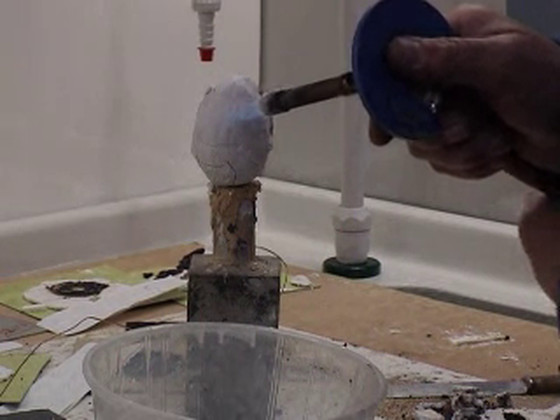
The surface of Starlite burns black, but the egg itself has no change.
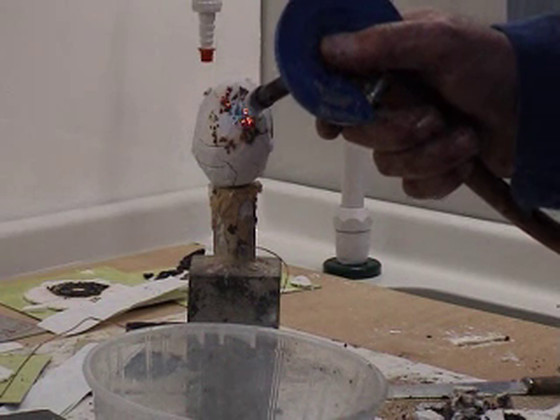
After continuing to fog with the fire of gas burner for about 5 minutes, pick up the egg ......
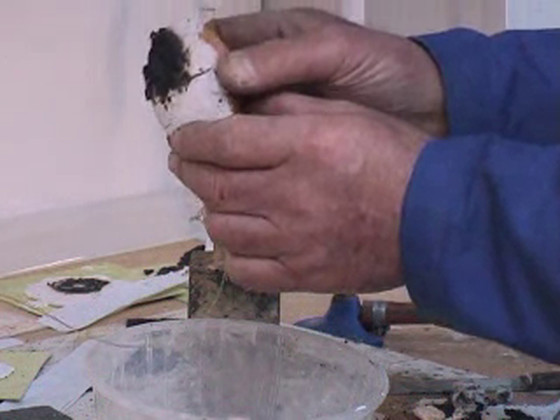
Divide by a butter knife.
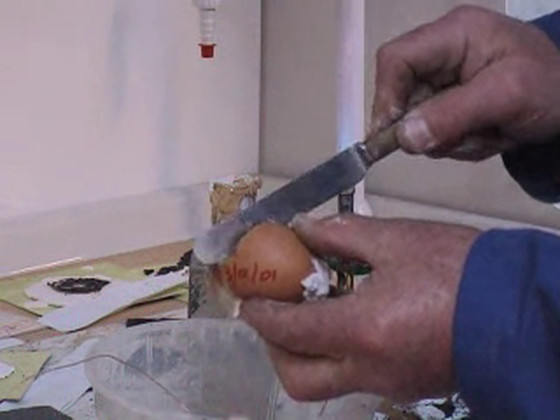
Despite having burned a hot gas burner flame for more than 5 minutes, the albumen is not denatured at all and it keeps its raw condition.
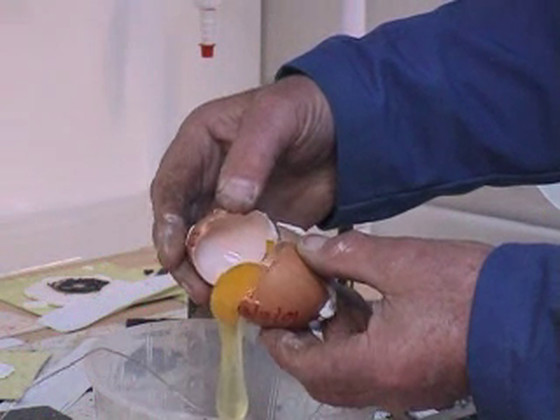
There was no evidence that solidified egg white was on the inside of the shell, and you can see that Starlite completely protected the eggs by blocking heat.
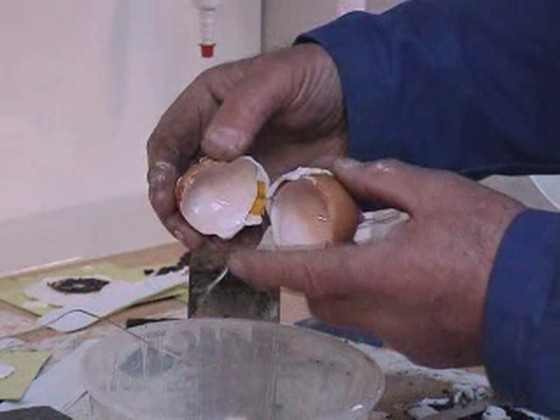
When British Maurice Ward who invented Starlite got in touch with the British · BBC and released the experiment, it attracted attention from NASA and technology companies at once. However, as there were several companies that tried to deprive Mr. Ward from the right without paying adequate compensation, Mr. Ward decided not to give Starlite's synthetic recipe to anyone. Mr. Ward died in 2011 without revealing its Starlite recipe. Starlite has become an illusionary new material called "if the synthetic recipe is released, the history of human beings may have changed."
Ben Cusick inventor in YouTuber actually performed the surprised experiment that materials having the same degree of insulation effect as that of Starlite can be reproduced from those in the kitchen, and explained how to make Starlite-like material It is.
A Super-Material You Can Make In Your Kitchen (Starlite?) - YouTube
The white clay that Mr. Cusick is holding is a new material patty reproducing Starlite.
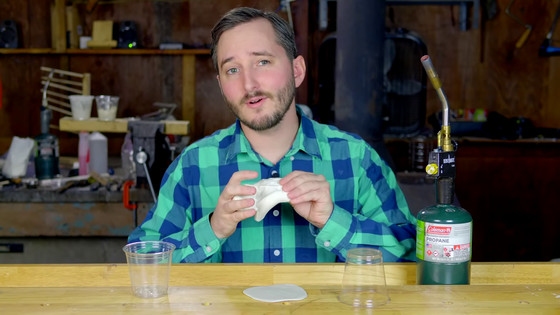
Extend this putty thinly and spread it on the left hand ... ....
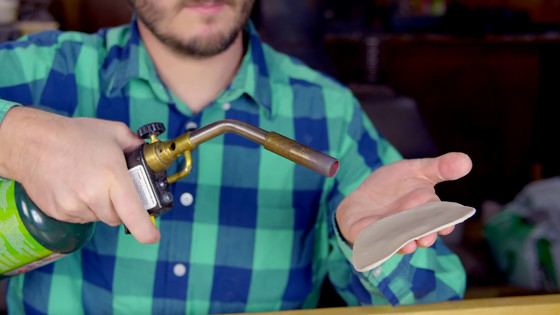
Propane gas burner keeps it as it is.
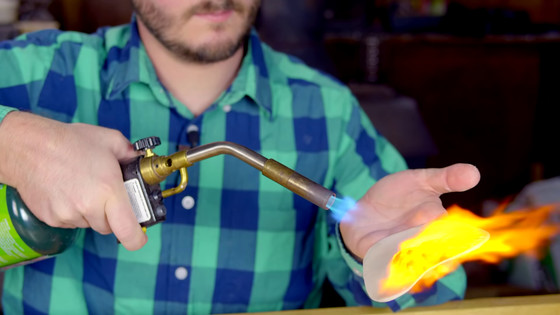
The hand should be burned if it is ordinary, but Mr. Cusick continues to put on putty on the hand with a burner with a face that was kelori.
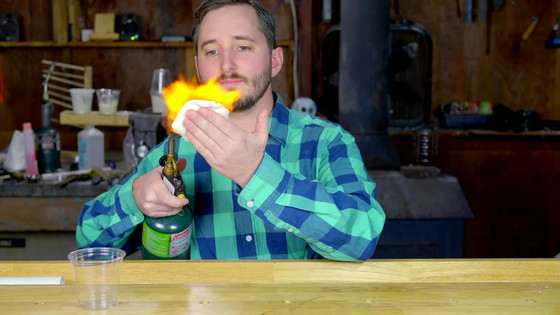
Continue drooling for a while and erase the fire of the gas burner, white smoke rises from the surface of the black burnt putty.
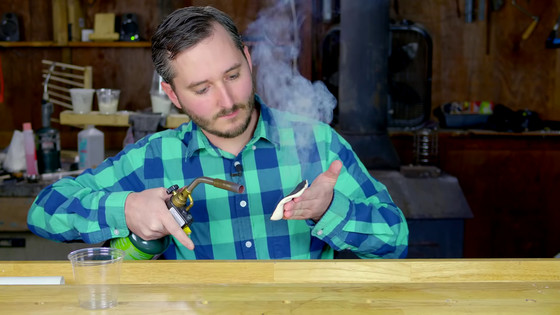
Then touch the part that had been swollen soon with your right hand. I thought that it was insanely hot as it was the fire burner fire hit until just a couple of seconds before ... I touched her with a bare hand with a flat face while saying "I touch it cold".
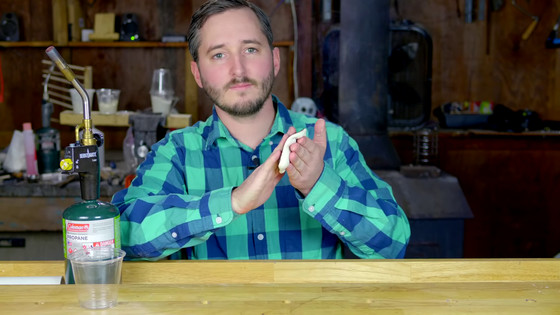
The material of this new material is sodium bicarbonate (sodium bicarbonate), cornstarch, glue, it can be made from something that exists in any home.
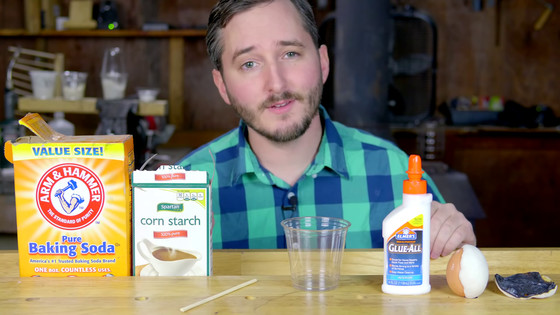
It is very easy to make. First add cornstarch to cup about half
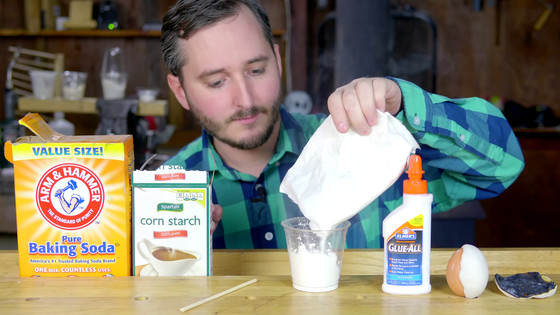
And add 10% of sodium bicarbonate of cornstarch.

While adding the adhesive little by little, I will mix.
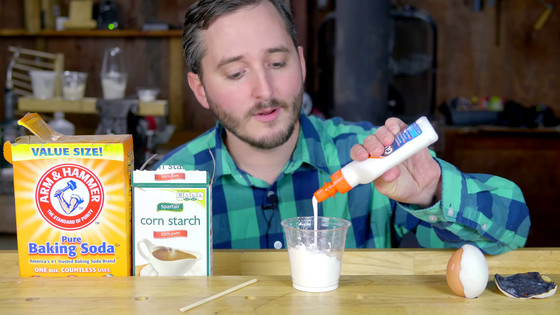
At first it is powdery, but if you continue to mix with increasing adhesive ... ....
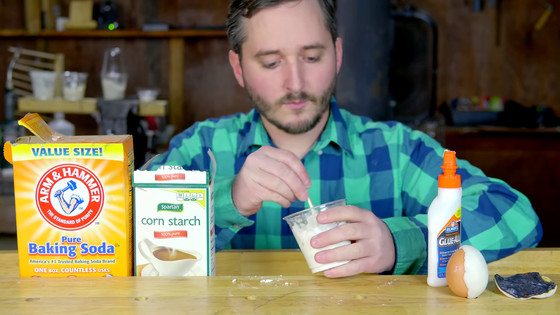
The putty of the material will become a clay-like texture. This completes the putty.
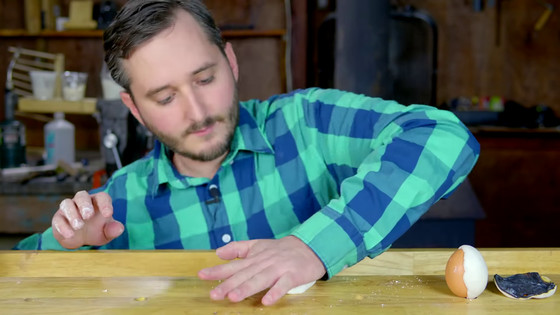
Originally it is necessary to paint this putty and then dry it and to evaporate the moisture of the adhesive firmly. However, it is said that sufficient heat resistance is shown even in a state like clay containing moisture. For example, when putting a putty immediately after kneading on a thin plastic cup and fogging it with a burner, the periphery of the putty will melt and deform by heat, but you can see that the part put on the putty is hardly deformed.

When you look closely at the surface of the putty to which the flame of the burner hits, the surface first blackens and burns, and the surface bulges greatly with gas so that bubbles will emerge. Corn starch burns to carbon, the sodium bicarbonate in the putty thermally decomposes to generate carbon dioxide. Since carbon dioxide generated from the inside expels air, carbon can not be combined with oxygen. Mr. Cusick explains that coating with carbon and carbon dioxide with the highest melting point among all the elements produces a high insulation effect so far.
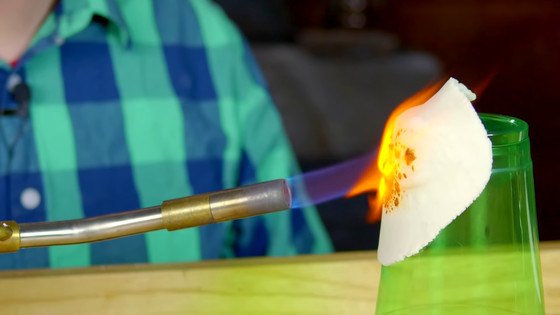
Like Ward this time, cover the raw egg with a putty made with cornstarch, sodium bicarbonate and adhesive, and wear it with a gas burner.
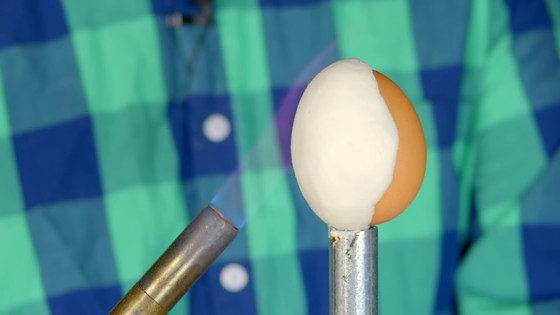
Then, the surface of the putty which turned discolored black rises slowly in the flame.
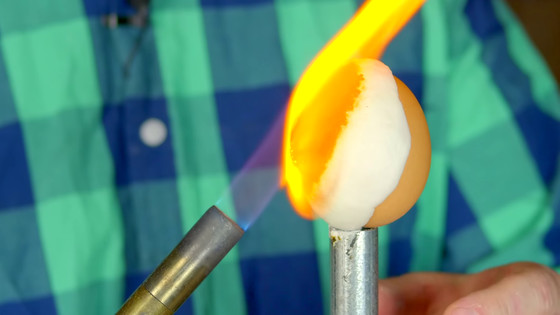
After stopping burning for a while with a burner and stopping the fire, the new material stuck to the egg is swollen like a rice cake baked.

When breaking this egg, the contents remained excellent as well as Starlite's experiment by Mr. Ward.
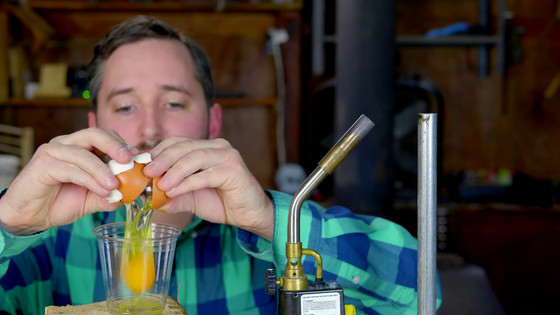
In addition, although this Starlite-like material itself can be made very easily, since it is very dangerous to spray a gas burner towards his hand, Mr. Cusick calls attention It was.
